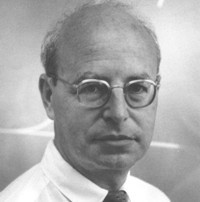Gerald Westheimer facts for kids
Quick facts for kids
Gerald Westheimer
|
|
|---|---|

Westheimer, c. 1970
|
|
| Born | 13 May 1924 Berlin, Germany
|
| Nationality |
|
| Occupation | Scientist |
| Organization | University of California, Berkeley |
Gerald Westheimer (born May 13, 1924) is an Australian scientist. He works at the University of California, Berkeley. His research focuses on the human eye. He studies how we see details and how we see things in 3D.
Contents
Life and Journey
Gerald Westheimer was born in Berlin, Germany, on May 13, 1924. His family was Jewish. In 1938, when he was 14, his family had to leave Germany. This was because of attacks against Jewish people by the Nazis. They moved to Sydney, Australia, where they found safety.
After arriving in Sydney, Gerald finished high school by studying on his own. He then joined a program to become an optometrist. An optometrist is someone who checks eyes and prescribes glasses. He graduated with top honors in 1943. While working as an optometrist, he kept studying. He earned a science degree from Sydney University.
In 1951, Gerald Westheimer moved to the United States. He continued his studies at Ohio State University. He earned a PhD in Physics, focusing on how our eyes see. Later, he became a professor at different universities. These included the University of Houston, Ohio State, and the University of California, Berkeley.
In 1960, he became a professor at Berkeley's School of Optometry. He later joined the Department of Physiology-Anatomy. There, he started a special group called the Division of Neurobiology. This group studied how the brain and nerves work, especially related to vision. He led this group until 1994.
Gerald Westheimer always kept his Australian citizenship. In 2009, he received an award called the Order of Australia. This award recognized his strong connection to Australia. It was the country that gave his family a safe home.
How We See: Gerald Westheimer's Research
Even as a young boy, Gerald Westheimer was very curious about astronomy, optics, and the eye. Optics is the study of light and how it behaves. He spent his long career researching human vision. He wanted to understand how our eyes work.
He has written over 200 scientific papers about his discoveries. His work has helped us learn a lot about how we see. For example, he studied how our eyes move. He also looked at how our eyes see different patterns of light. He researched how our eyes see in dim light and how they see very fine details.
Some of his important research topics include:
- How our eyes move.
- How our eyes see patterns of light.
- How light forms an image inside the human eye.
- How different parts of the eye work together to see in dim light.
- How our eyes see very sharp details.
Music and Giving Back
Gerald Westheimer is also a talented violinist. He enjoys playing music in his free time. He has given many beautiful 19th-century violins to the Sydney Conservatorium of Music. This is a special school where people learn to play music. He also gave money to help take care of these instruments.
He wanted talented young Australian musicians to use these high-quality violins. This way, they could practice and become even better at playing.
Awards and Honors
Gerald Westheimer has received many important awards for his work.
Scientific Awards
- 1978: Tillyer Medal from the Optical Society of America.
- 1979: Proctor Medal from the Association for Research in Vision and Ophthalmology.
- 1984: Became a Fellow of the Royal Society of London. This is a very old and respected scientific group.
- 1986: von Sallman International Prize in Vision and Ophthalmology.
- 1986: C.F. Prentice Medal from the American Academy of Optometry.
- 1988: Bicentennial Medal from the Australian Optometric Association.
- 1992: Gave the Ferrier Lecture at the Royal Society of London.
- 1994: Became a Fellow of the American Academy of Arts and Sciences.
- 2010: Barry Collin Research Medal from the Optometrists Association of Australia.
- 2021: Ken Nakayama Medal for Excellence in Vision Science.
Academic Awards
- He has received honorary doctorates in Science and Medicine. This means universities have given him special degrees to honor his achievements.
General Awards
- He was made a Member of the Order of Australia. This is a high honor in Australia.

